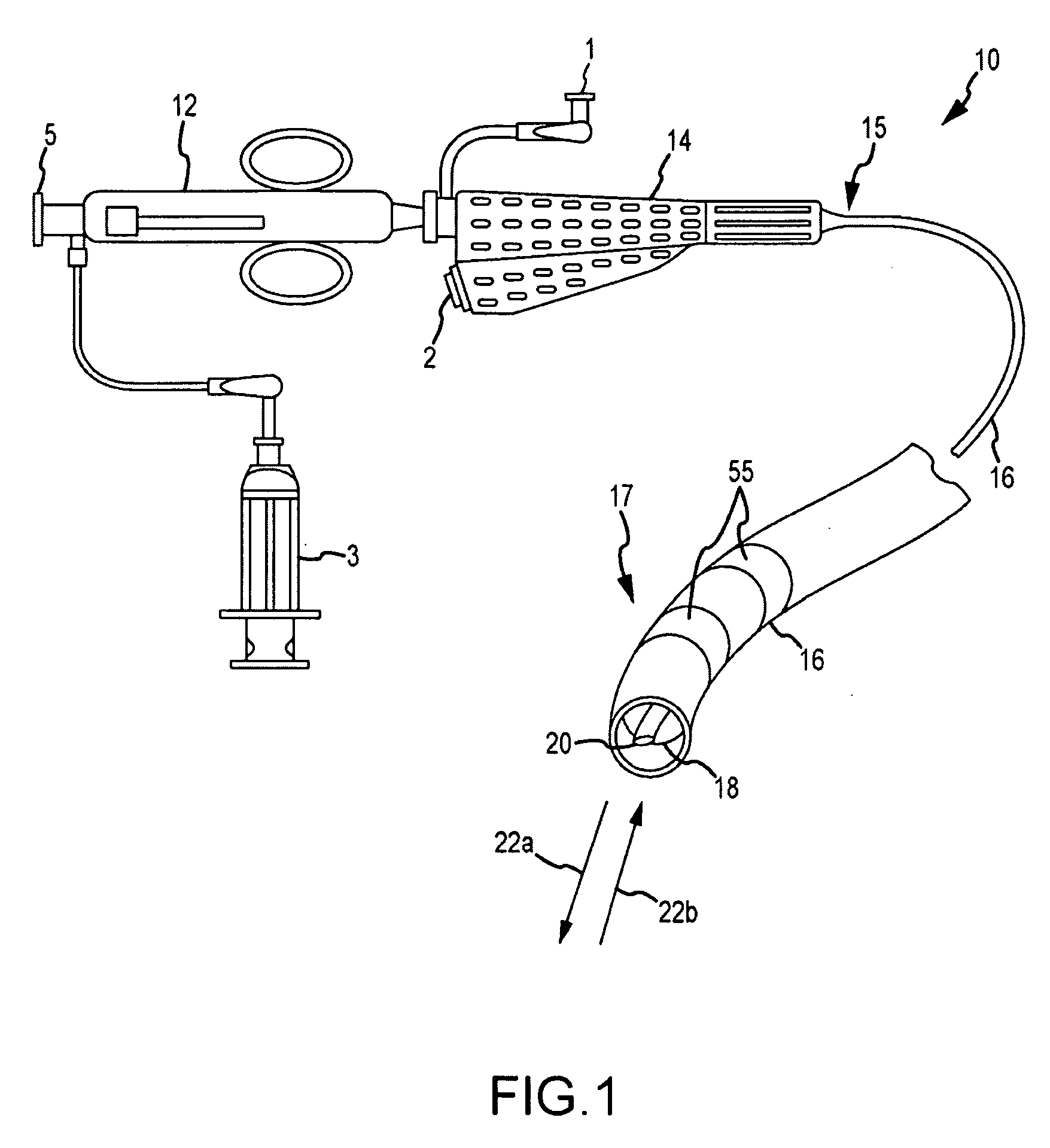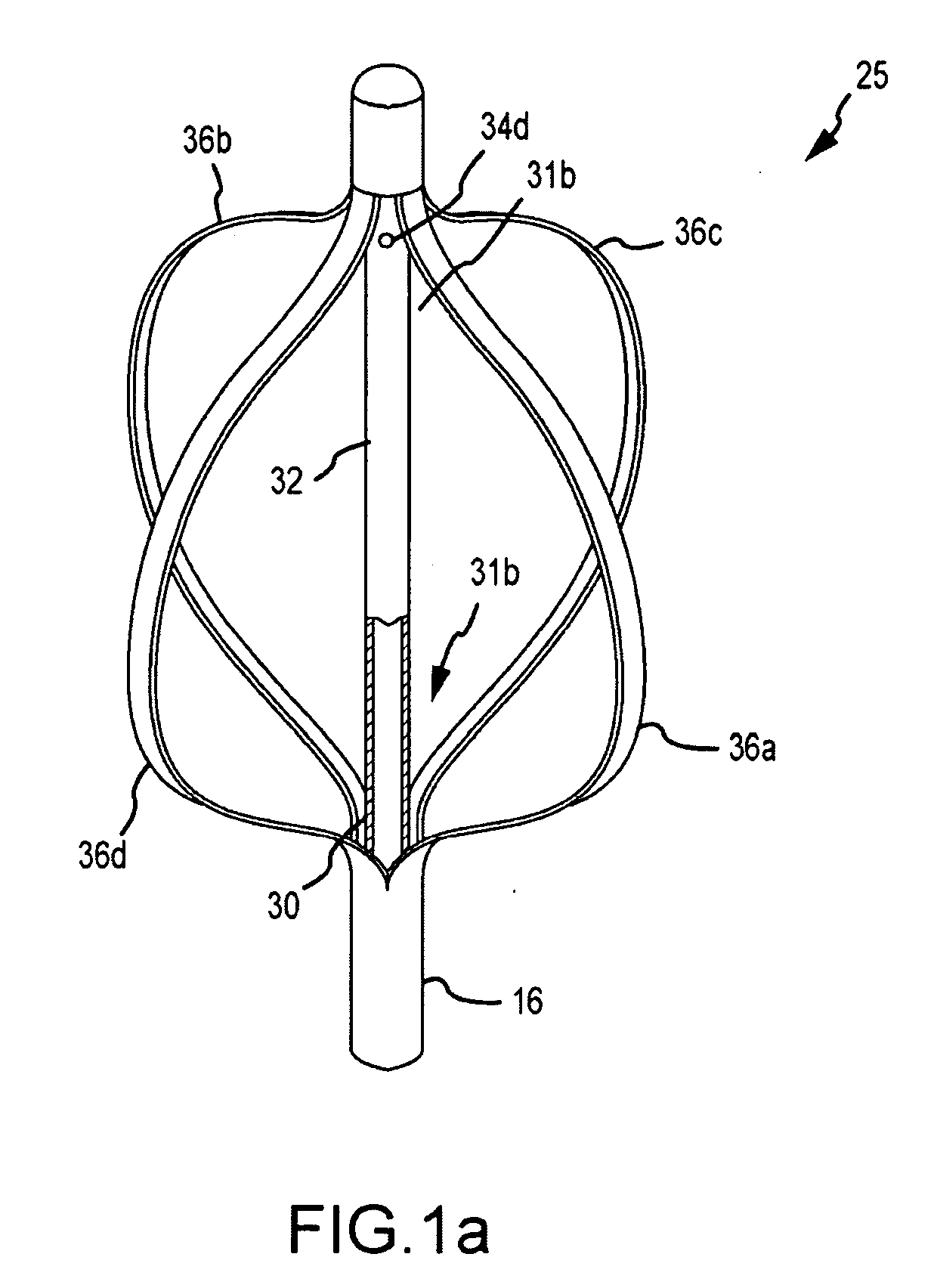Seal for controlling irrigation in basket catheters
a basket catheter and valve body technology, applied in balloon catheters, medical science, surgery, etc., can solve the problems of tachycardias that can deteriorate to fibrillation, the risk of thrombosis is increased, and the heart does not move enough blood, so as to reduce the risk of thrombosis
- Summary
- Abstract
- Description
- Claims
- Application Information
AI Technical Summary
Benefits of technology
Problems solved by technology
Method used
Image
Examples
Embodiment Construction
[0020]Several embodiments of a catheter system according to the present invention are depicted in the figures as the catheter system may be used for delivery of an anticoagulant (e.g., heparinized saline) or other fluid between the splines of a basket catheter, especially at or near the apexes where the splines are attached to the catheter, in order to reduce the risk of thrombus formation during a medical procedure. As described further below, the catheter of the present invention provides a number of advantages, including, for example, facilitating delivery of the anticoagulant or other fluid to reduce thrombus formation without ingress of fluid into the catheter shaft. These advantages are realized without interfering with an actuating mechanism for a basket catheter.
[0021]Before continuing, it is noted that other components typical of systems which are conventionally implemented for such procedures, are not shown or described herein for purposes of brevity. Such components may n...
PUM
 Login to View More
Login to View More Abstract
Description
Claims
Application Information
 Login to View More
Login to View More - R&D
- Intellectual Property
- Life Sciences
- Materials
- Tech Scout
- Unparalleled Data Quality
- Higher Quality Content
- 60% Fewer Hallucinations
Browse by: Latest US Patents, China's latest patents, Technical Efficacy Thesaurus, Application Domain, Technology Topic, Popular Technical Reports.
© 2025 PatSnap. All rights reserved.Legal|Privacy policy|Modern Slavery Act Transparency Statement|Sitemap|About US| Contact US: help@patsnap.com



